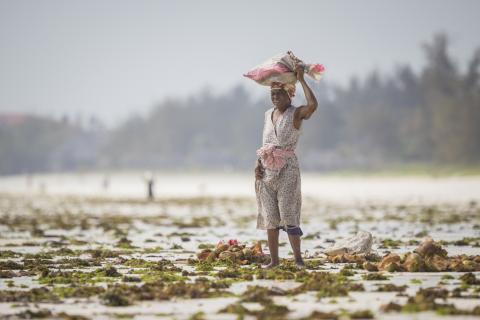Flagging hunger hotspots
This is a summary of the following report: WFP and FAO (2023) Hunger Hotspots. FAO-WFP early warnings on acute food insecurity, June 2023 to November 2023 outlook. Rome. https://doi.org/10.4060/cc6206en
The post-pandemic global economy is set to slow down in 2023, various fiscal measures being implemented that will have knock-on effects throughout many communities. Domestic food prices remain high and low foreign currency reserves in many countries limit imports. Compounding this, there is reduced donor support to offset hunger in 2023, which will have negative programmatic implications.
Extreme weather events are also increasingly likely – a trend which has been seen across the last decade – with climate variability, droughts, floods, and storms (such as Cyclone Mocha, hitting Myanmar) expected. At the time of publication, El Niño conditions were projected to start from May to July 2023 (Box 1) – these have since been confirmed by the World Meteorological Organization.1
Box 1: What is El Niño?El Niño is a natural climate phenomenon that results in warmer temperatures in the Pacific Ocean. Warmer water spreads further and stays closer to the surface, which releases more heat into the atmosphere. El Niño has been shown to increase the likelihood and intensity of droughts, floods, crop failures, and subsequent food shortages in certain regions. However, climate forecasting is complex and unpredictable, so exact weather predictions are challenging. |
The purpose of the report is to first flag vulnerable hotspots and, in turn, provide country-specific recommendations for anticipatory actions (short-term protective interventions) and emergency response (actions addressing existing humanitarian needs) to be implemented. These interventions work to mitigate humanitarian needs during the critical time window between an early-warning trigger (as seen in the flagged countries) and an actual impact on livelihoods. The report also touches on some preparedness actions – which are critical for building resilience.
Hotspots are identified by food security, conflict, economic, and natural hazards expert consensus, based upon analysis from the Food and Agriculture Organization of the United Nations and World Food Programme – situated in Rome head offices and in country. Pre-set qualitative and quantitative indicators are applied, a breakdown of which is beyond the scope of this summary.
Acute food insecurity is projected to deteriorate further in 22 countries between June and November 2023. The situation in all featured countries is stark, but categorisation by severity (below) allows for the effective prioritisation of already constrained resources.
Highest concern – Urgent
Afghanistan (15.3 million in acute food insecurity), Burkina Faso (3.4), Haiti (4.9), Mali (1.3), Nigeria (24.8), Somalia (6.6), South Sudan (7.8), Sudan (19.1), and Yemen (16.9).
Severe movement restrictions are affecting people and goods in Haiti, Burkina Faso, Mali, and Sudan (amidst recent conflict). Except for Afghanistan, all countries in this ‘highest concern’ category have conflict/insecurity, which adds an additional challenge to food access and nutrition programming.
Very high concern – Intense and worsening
Central African Republic (3 million in acute food insecurity), Democratic Republic of Congo (24.5), Ethiopia (20.1), Kenya (5.4), Myanmar (15.2), Pakistan (8.6), and Syria (12.1).
Additional hunger hotspots
El Salvador (no data), Guatemala (3.2), Honduras (2.6), Lebanon (2.3), Malawi (3.8), and Nicaragua (no data)


